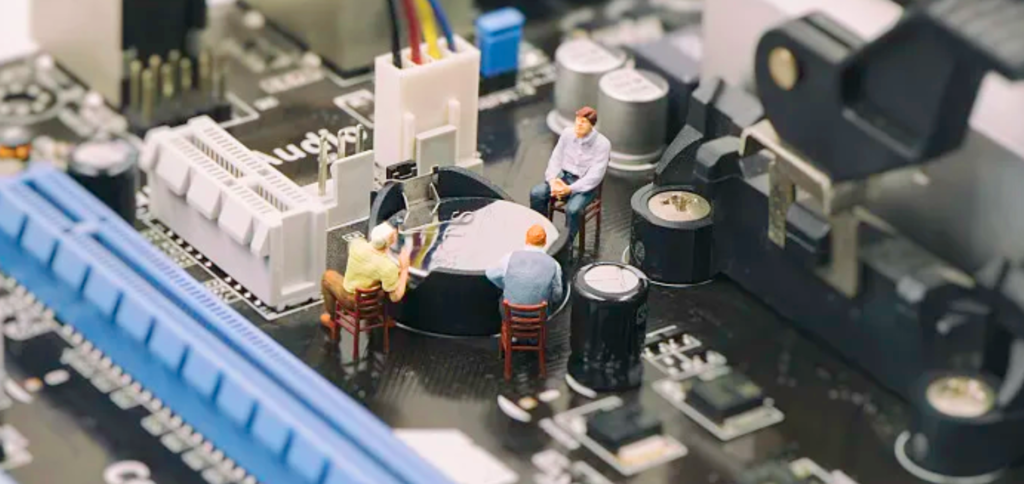For any customer, Surface Mount Technology (SMT) prototype assembly is quite common. In SMT prototype assembly, the reasonable and effective use of components is crucial to ensure the stability and quality of the PCB performance. Therefore, today we will discuss the key considerations for component usage in the SMT prototype assembly process.
The 4 Key Points for Component Usage in the SMT Prototype Assembly Process
1. Limiting the output current to avoid circuit board lock-up:
Limiting the output current is necessary to prevent certain parts of the circuit board from experiencing “lock-up” due to excessive current, resulting in the circuit malfunctioning.
For example, suppose the maximum output current of a component is 10mA, but the actual current in the circuit may exceed this value, causing the component to operate in an overloaded state. Therefore, it is essential to ensure in the design phase that the rated output current of the component is not exceeded, which can be achieved through appropriate current limiters or current sensors.
2. Utilizing Filter Networks:
In circuit systems with long cable lines, the likelihood of electromagnetic interference increases. Using filter networks can effectively filter out these interference signals, enhancing the stability and anti-interference capability of the circuit.
For example, consider a sensor system that requires long cable lines, which may be affected by surrounding electromagnetic interference. Adding a low-pass filter to the sensor input end can filter out high-frequency interference, ensuring the accuracy of sensor readings.
3. Utilizing RC Networks:
Forming an RC network with resistors of higher resistance values and capacitors of at least 100pF can reduce the impact of electrostatic discharge, especially for sensitive input terminals of bipolar devices.
For example, in high-voltage electrostatic environments, such as dry winter conditions, equipment may be susceptible to electrostatic discharge. By adding an RC network to sensitive input terminals, the impact of electrostatic discharge can be minimized.
4. Avoiding Floating Input Pins on Components:
When input pins are left floating, the input potential will be in an unstable state, which may lead to abnormal circuit behavior and issues like electrostatic discharge.
For instance, in circuit board design, it’s crucial to ensure that all component input pins are properly connected to ground or the signal source. For example, for the input terminals of operational amplifiers, they should be connected to the respective signal source or ground instead of being left unconnected. This helps prevent instability and interference.
Other Suggestions

By adhering to the above considerations, the success rate of SMT patch sampling can be improved, ensuring the normal operation and stability of the circuit board. In addition to the considerations mentioned above, there are also other important aspects to be noted in the SMT patch sampling process:
- Component Packaging and Dimensions: Ensure that the selected component packaging matches the PCB design and that the dimensions are suitable for the sampling production process. The choice of packaging should consider the component’s power consumption, heat dissipation requirements, and PCB layout requirements.
- Heat Distribution and Heat Dissipation Design: In PCB design, consider the heat distribution of components and heat dissipation design to ensure that the component operates within a safe temperature range. Heat dissipation design is particularly important for high-power components or circuits that operate for extended periods.
- Soldering Quality Control: Soldering quality directly affects the reliability of connections between components and PCBs and circuit performance. During the SMT patching process, pay attention to the control of parameters such as soldering temperature, solder selection, and soldering time to ensure that the soldering quality meets requirements.
- Antistatic Measures: During the SMT patch sampling process, attention should be paid to preventing static electricity from affecting components and circuits. Use appropriate antistatic equipment and antistatic operating procedures to prevent electrostatic discharge from damaging circuit components.
- Material Selection and Compatibility: Choose materials compatible with the process, including PCB materials, soldering materials, packaging materials, etc., to ensure their mutual compatibility and avoid quality issues caused by material incompatibility.
- Testing and Verification: After SMT patch sampling, strict testing and verification are required to ensure correct component installation, reliable circuit connections, and circuit performance that meets design requirements. Testing includes visual inspection, functional testing, performance testing, etc.
By paying attention to the above aspects, the use of components in the SMT patch sampling process can be ensured to meet requirements, thereby ensuring the quality and stability of the entire circuit board.
Conclusion
We hope that the information on SMT patch sampling discussed today is useful to everyone and can help you communicate effectively with factories during the sampling process. As a control board assembly manufacturer with over a decade of experience, SUPERPCBA is also very familiar with SMT patch sampling. We welcome inquiries and discussions from both new and existing customers. You can contact our sales team at sales@superpcba.com for personalized assistance from our engineers to help you bring your project to market quickly and earn the trust of your customers.



